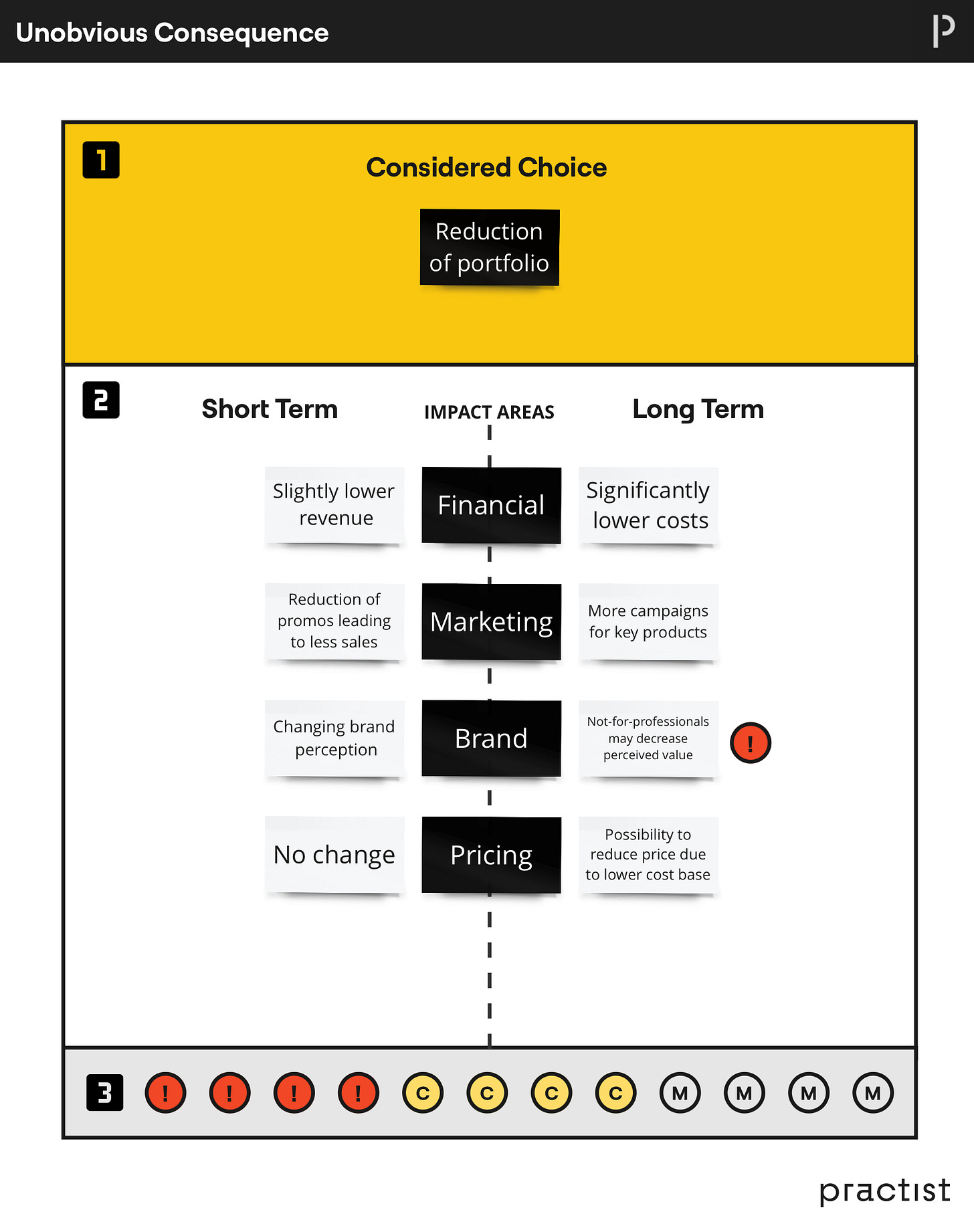Second-order thinking: Have you thought about the long-term consequences of your decisions?
Mental models in practice, episode 5
Definition
Second-order thinking involves considering the broader perspective and long-term consequences of decisions beyond immediate outcomes. It is about going beyond simple cause-and-effect reasoning to explore the potential results of actions from multiple angles.
Example
To illustrate this thinking framework, let’s take an example that most of us are familiar with. When we start doing regular body or fitness training, it is for the long-term benefit. We don’t do it for immediate gains because they are hardly there. We are not getting slimmer, and our body is full of pain. But we know the reward will come after some time, so we are ready to face the short-term discomfort. This is applying second-order thinking in reality.
Having said that, decisions are hardly ever that straightforward. Consider the following business example. The company struggles with the low number of orders. They consider selling their products with a significant discount to address the situation. At first sight, it may be a good idea, but there’s a catch. The company has a high-quality product, and its value proposition was never built around a low price. Instant consequences were easy to predict and very tempting. A discount price will bring a lot of customers. However, when they applied second-order thinking, they started to see long-term issues:
Attracting different segments of customers, more focused on price
Entering Red Ocean with other brands that compete on price
Long-term financial losses due to limited margins
Losing market position
Ultimately, they decided not to provide any discounts and focus on bringing more value to customers.
How to do it
As easy as it sounds, thinking about the effects of the effects can become a complex exercise. To keep it effective and structured, follow this framework.
Write a decision you are about to make on the one side.
Put two columns on the other, with a ‘short-term’ and ‘long-term’ title. You can write actual time frames (3 months and 1 year) to clarify it.
Add categories that are worth considering in this decision, both on short and long-term timelines:
In a business context, those could be areas like Marketing, Finance, Legal, UX, Customer, Value proposition, etc.
For personal dilemmas, it is related to the topic and are context-dependent.
Think of the potential effects in those categories.
Prioritize them by their impact:
Critical
Should be considered or managed
Not important
Summarise it by examining the effects and seeing whether they impact your decision.
Verify if some assumptions need to be checked further before completing this exercise.
One useful tip. As this approach may be time-consuming, use it only for severe challenges and decisions.
It is not about predicting the future, it is about considering the likely consequences based on the information available to you at that moment.
Let’s see how it works in practice by analyzing an example: a company that sells tennis rackets is considering a reduction of its product portfolio by 50% to lower the cost base.
Business example: Reduction of portfolio
Before we move to step 1 of this framework, let’s ensure everyone is aligned with the challenge’s definition. In other words, how do we define portfolio reduction? Which products or segments exactly?
The upgraded description would be: A company that sells tennis rackets is considering reducing its product portfolio by 50% to lower its cost base. It will stop producing rackets for kids and professionals and keep only a portfolio of products for people who play at an amateur level.
There are four areas selected to conduct the analysis: Financial, Marketing, Brand and Pricing. For each of them we listed consequences, either short or long term.
As it turns out, by making a second-order thinking analysis, we can see that reducing the product portfolio isn’t just a cost move. It would require a redefinition of the brand and its value proposition. A decision that seemed pretty easy to make, became very impactful in the end.
This is why it is helpful to always consider the second-order effects of essential decisions.




